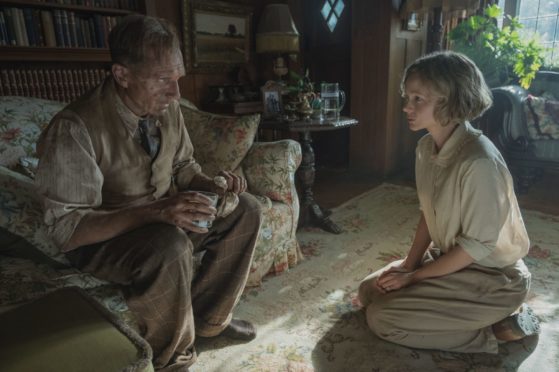
Just when you thought the entertainment industry was finally starting to address the widespread issues of ageism and sexism, another report comes along and you realise, hold on, we’ve not actually made much progress, have we?
The new Netflix film The Dig has come under fire for casting 35-year-old Carey Mulligan to play real-life Suffolk landowner Edith Pretty, who was 56 at the time the story takes place.
No one is having a go at Carey’s acting abilities – she gives a fantastic performance – but rather are questioning why the casting director couldn’t hire someone more age-appropriate. Being over a certain age didn’t seem to be a problem when they cast 51-year-old Ben Chaplin to portray archaeologist Stuart Piggott, who was actually 29. Ageism in reverse?
Living our lives on-screen, we need to step away from the selfie-stick and focus on the big picture
The Greek mythological figure Narcissus, so the story goes, became so obsessed with his own reflection, he drowned in it – and in our modern world of social media and unrealistic beauty standards, the ancient cautionary tale has never seemed so relevant.
Between Snapchat and TikTok, Facebook and Instagram, we are constantly visible to an “audience” and, ultimately, exposure to comparison and criticism has left many users feeling pressured to present the very best version of themselves.
But here’s the thing – social media isn’t real and many are striving for a picture-perfect filtered life (or face) that doesn’t actually exist.
I can happily say I’ve never used a filter in my life (mostly because I wouldn’t even know where to start) but I am aware I’m very much in the minority. I see photographs of people who I might not have met in person for a while and think: “Oh wow, you look good. What have you done?”
No, it’s not make-up or subtle cosmetic surgery. It’s usually a clever app that can do everything from make your nose look smaller and your eyes bigger to smoothing the skin and even changing hair colour. It’s no wonder so many young women, in particular, are so unhappy with how they look.
Thankfully, society is now becoming more aware of the potential harm caused by edited social media pictures and, last week, the Advertising Standards Authority gave a landmark ruling on the use of filters by so-called influencers and brands.
Responding to the #filterdrop campaign, launched last year, the regulatory body ruled that “beauty filters” should not be applied to social media adverts if they exaggerate the effect of the product, deeming the content to be potentially “misleading” for consumers.
How many of us have been tempted to buy something because the model or actress in the advert looked fantastic? Well, more often than not, it’s filters or clever photography that made them look that way, not necessarily the product. So I’m glad the practice is being clamped down on.
What’s more, the ruling comes at an important time, not just because of increasing social media use, but also due to the way we’re currently communicating.
With video calls now a daily occurrence, apparently people are beginning to suffer from a phenomenon called “Zoom face”, which sees us fixating on lines, wrinkles and “flaws” that would otherwise go unnoticed.
Be honest, how many times do you look at your own reflection when you’re on a Zoom call? We all do it and I’ve found there’s a tell-tale sign when someone has glanced on their face – they start touching or fussing with their hair. I’ve noticed this little tick so many times in the past year, and I’m sure most of us would happily return to old-fashioned telephone conversations as soon as possible.
Living in the public eye, you get quite used to having very little control over your image, so I know how easy it can be to scrutinise everything from your outfit to your haircut. Certainly, in the early years of Andy’s career, it felt like the only pictures tabloid newspapers ever printed of me were unflattering ones that were caught at stressful moments. When someone sets you up like that or criticises how you look, it really does have an impact.
But, fortunately, you do get to the stage where you stop caring so much, and my advice would be to step away from the sea of selfies and start focusing on the bigger picture.

Enjoy the convenience of having The Sunday Post delivered as a digital ePaper straight to your smartphone, tablet or computer.
Subscribe for only £5.49 a month and enjoy all the benefits of the printed paper as a digital replica.
Subscribe